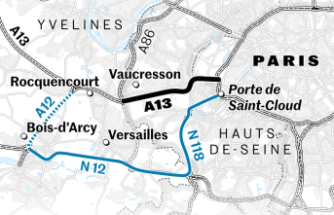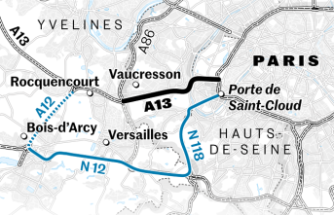On the island of Usedom, as the North-easternmost island of Germany, with flowing Transition to Poland, is like a betrayal. As is so often the case with travel, every word destroyed targets over the secret is the silence about, if not by the masses of tourists the destination itself. From the Wilhelminian Era to 1945, when the railway bridge Karnin was blown to the mainland by the Wehrmacht, was the island of Usedom, with its three Imperial baths Ahlbeck, Heringsdorf and Bansin, the bathtub of Berlin. Now, the island threatens to be it now. Although the journey by train lasts for since the blowing up is considerably longer, to be poured out in Corona times probably masses on the island of Usedom. Especially the beaches to the Ahlbeck pier, the oldest of its kind in Germany, the Loriot was once in "Pappa ante portas" is still almost solely for his Film, is like a human carpet.
Stefan Trinks
editor in the features section.
F. A. Z.Now is also a book for the semi-secret island appeared ("the island of Usedom –the discovery of The island". Photographs by Matthias Gründling. Text by Jochen trunk. Edition Braus, Berlin 2020. 19,95 Euro), which could affect other Still-Usedomisten. Perhaps, but it also documented is already a condition that exists as little more.
On the one side of the island, V2, on the other hand, the Imperial baths
The Band comes with almost no words –the few made are from the Berlin publishing house of the head itself, also a long-time island-goers. The slim landscape format lives all of the images, the vary is to be expected that, at times completely surprising. Even longtime admirers of the island are amazed about the at Peenemünde as a Ghost train from the Cold war to visitors were the end of Soviet U-461, the largest ever built under water missile boat, or the remnants of the "retaliation weapon 2" of Wernher von Braun in the local "army research Institute", under a terrible toll of forced laborers built and against London.
imagesRepeat of the photographer Matthias Gründling, by doing so, brutal contrasts, such as the images of "spring in the conservation area, the southern tip of Gnitz" and "oil production at new village" on top of each other. But not of the picturesque, against the light at sunset, photographed, black-iron tower, is to be more curious, deters at least as an environmental sin in the supposed Paradise. On the other hand, the two dead trees in the nature reserve Gnitz about the Ölbohrturm be hidden, not by a simple change of perspective, but fall immediately into the eye. Maybe you have to be like gudgeon, intensive care physician, to see with a sharp dissecting look like weiland Gottfried Benn, in his description of art in the Ugly, always Beautiful, and Vice versa. Probably also the origin of the photographer of the island helps with any Transfiguration.
the ruins of an Abbey to a kneel
A portrait of two fishermen on their boat with more than a skeptical view of the Front in the foul weather gear on the increasingly unergiebiger expectant sea, with its fahlkühlen tones actually "anything but romantic", as the caption says. For the precision-told-before-seen Moment, a lot of Details, like a lovingly carved, neo-Baroque figurehead in the back of the front of the fisherman, a headlights stuffed Seagull as a Talisman between the two Ship and suspenders and foul weather gear sewn-on brand, "Ocean", which embodies at least the promise of the "Great freedom No. 7". In the same tradition of the oblique view of simple "fishermen's shacks on the Ahlbeck beach promenade behind the moves" to the sophisticated late neo-classical Hotels.
The real charm of Usedom is its inconsistency: thatched Fachwerkkaten, in addition to futuristic-seeming designs such as the blue bridge of Wolgast; earthiness against "space rockets" of the death; early missionary in the eleventh century by Otto of Bamberg, nevertheless, in spite of numerous picturesque stone churches and monastery ruins to kneel in a consistently atheistic landscape, in the exaggerated high Church towers seem to be more likely to return to their original function as lighthouses and placemark taking. The little more when you hear it Ringing is witted outsourced in bell chairs in addition to the churches, a Northern German speciality.
Date Of Update: 17 July 2020, 10:20











